[ad_1]

At the primary classroom in Sankalp – The Learning Centre & Special Needs School, in Kolappancheri, Chennai, the afternoon sunlight weaves in through one of the window grills, casting the most curious shadows. The window grill design contains the alphabet — ABCDs wrought in iron, that children trace their fingers across and read out loud.
Architect Benny Kuriakose
This kind of tactile feedback is one of the design features that architect Benny Kuriakose pondered over before constructing Sankalp. The school for children with autism spectrum disorder, specific learning disability and intellectual and developmental disability, started its first centre, in Anna Nagar, in 1999. Two decades later, in 2021, Sankalp opened its most ambitious centre yet in Poonamallee, spanning across 1.35 acres. The Kolappancheri centre houses 136 students, from the ages of 5 to 20.
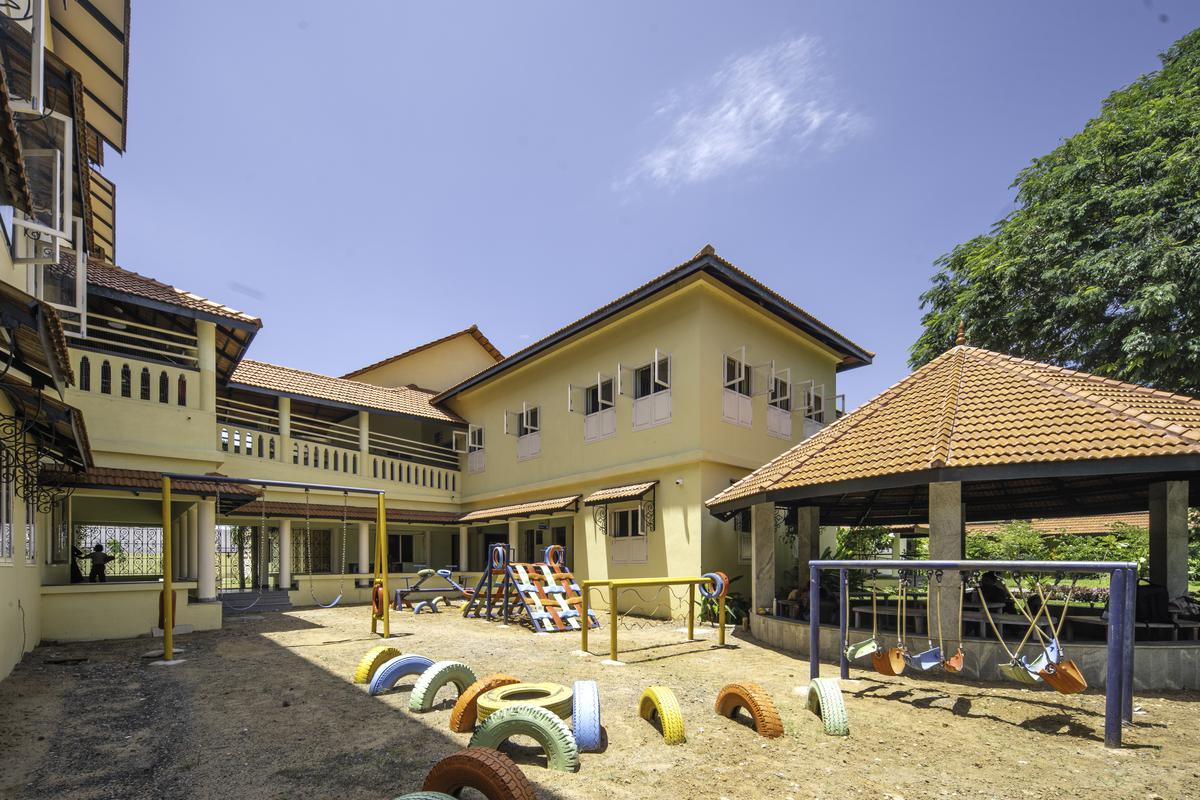
Open spaces that enable a connect with nature.
On first sight, the campus looks like it could be a two-floor residence — with verandahs, playground and open courtyards. Parallel lines of corridors, interjected with classrooms, so familiar to mainstream schools, are ditched in favour of curved pathways with pods of student areas. It makes sense when you find out that the school used to be an old age home before development. “We kept about 75% of the space as it is, and designed the school around it. That was our first big challenge, to give it a fresh look without demolishing the old structure,” says Kuriakose.
The place where Sankalp now stands was once an old age home.
Before designing the school, Kuriakose had extensive discussions with the directors of the school, Sulata, Lakshmi Krishna Kumar, and Subhashini Rao, and the teachers. It was based on their experience and suggestions that design features like rounded wall corners, pillars and tyre parks were incorporated. The softer edges help children who might not be as cognisant of their surroundings. This reflects in the seating furniture as well. Some of the tables and chairs have extra support for children with cerebral palsy.
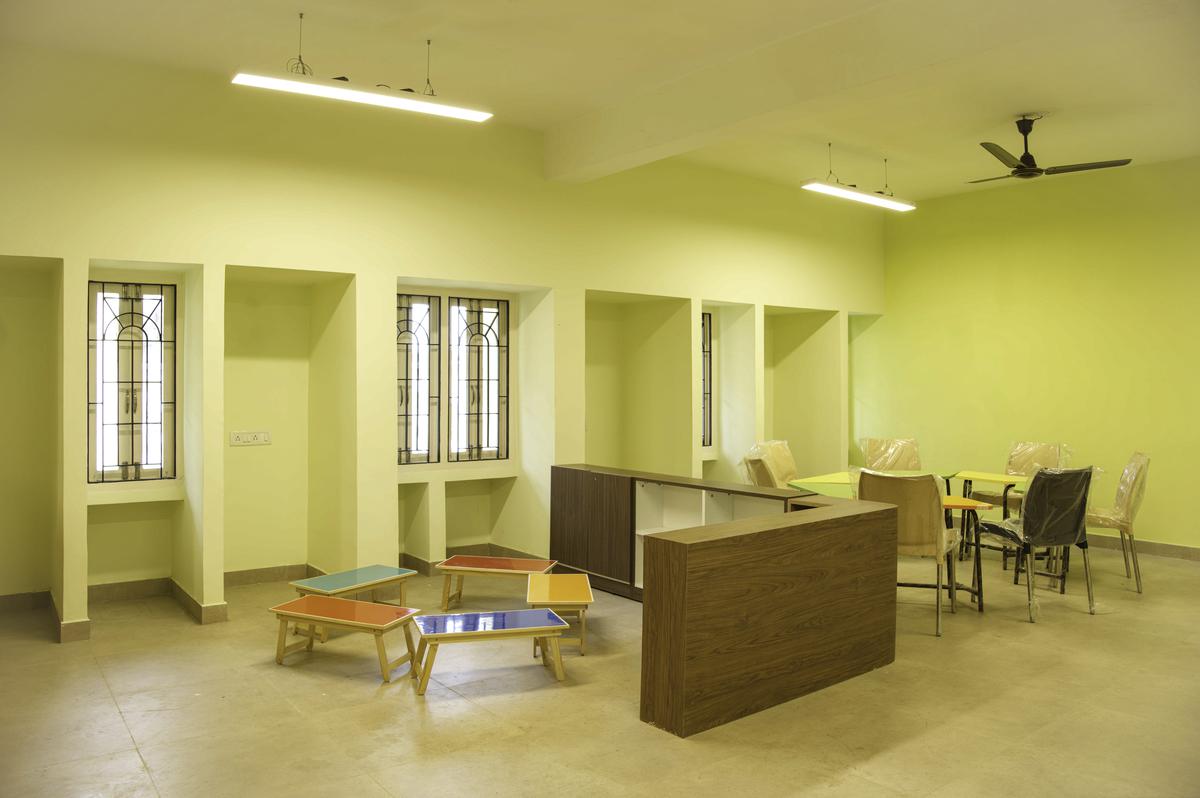
Ergonomic furniture for special children.
Over the last two decades, one of the major problems Sulata faced was a lack of space for the children to move around. “We started out in small rental units, so there weren’t many modifications we could make design wise. We would put physical barriers to divide the room into designated spaces. That was a big learning curve for us, as we realised the importance of having spaces where the children could move around and interact with each other,” she says.
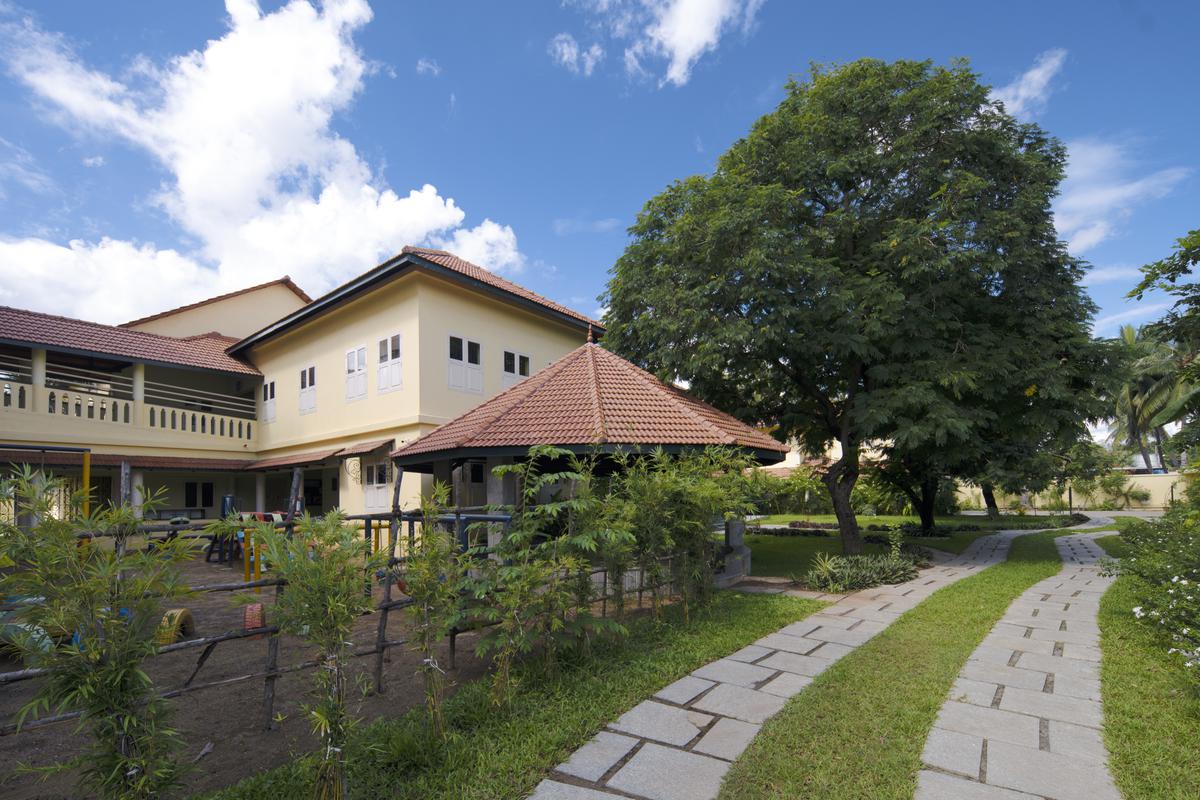
Curved pathways for easy navigation.
To facilitate this movement, Kuriakose zeroed in on verandahs as important transition spaces. He wanted the verandahs to act as buffer zones between high stimulus activities such as the ones in general classrooms, and the low stimulus activities such as music, arts and craft.
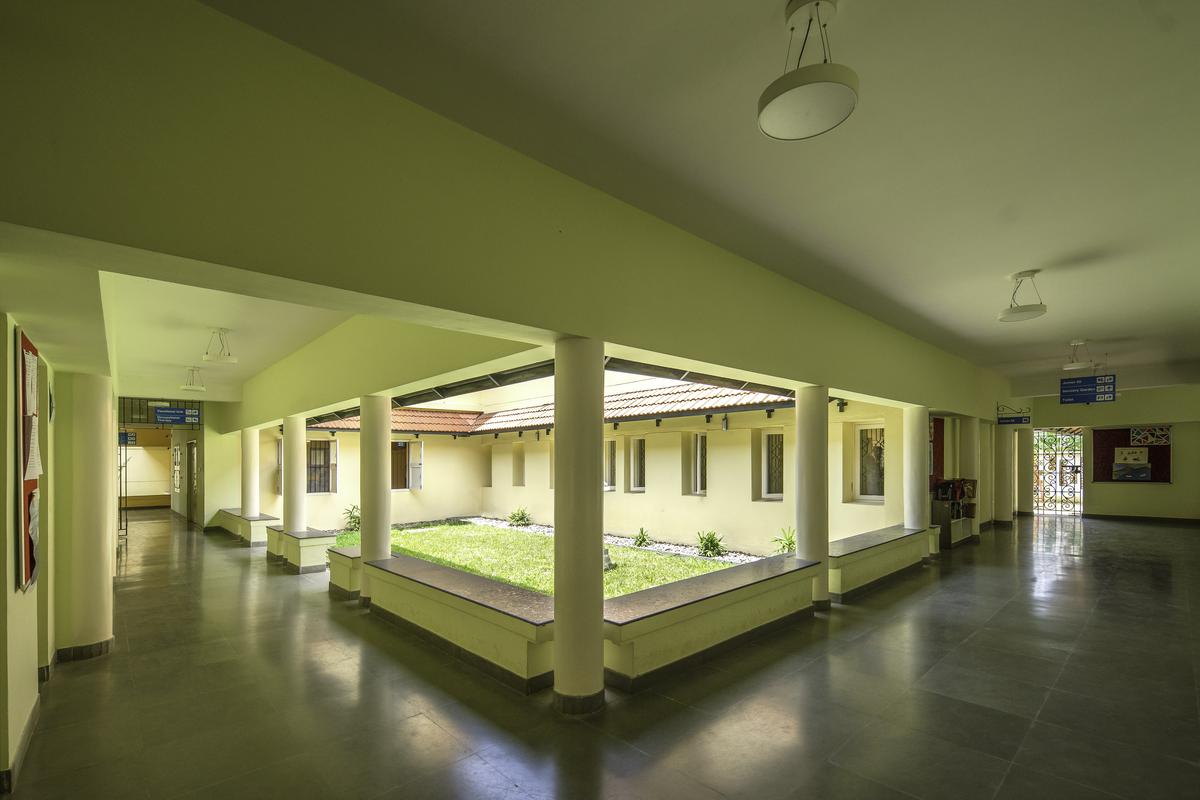
Courtyards that bring in better lighting and ventilation.
Natural lighting and empty spaces are the most important features of the classrooms in the school. The seating is not all pointed in the same direction towards a blackboard, but kept flexible as each child is taught individually. Along the circumference of the room, there are a few hollowed out niches. “There are some students who might get overstimulated, or might need their personal space separate from the group. At that point, we move their tables to these niches to let them be in their own world for a while, and feel less anxious,” says R. Yashoda, a teacher.
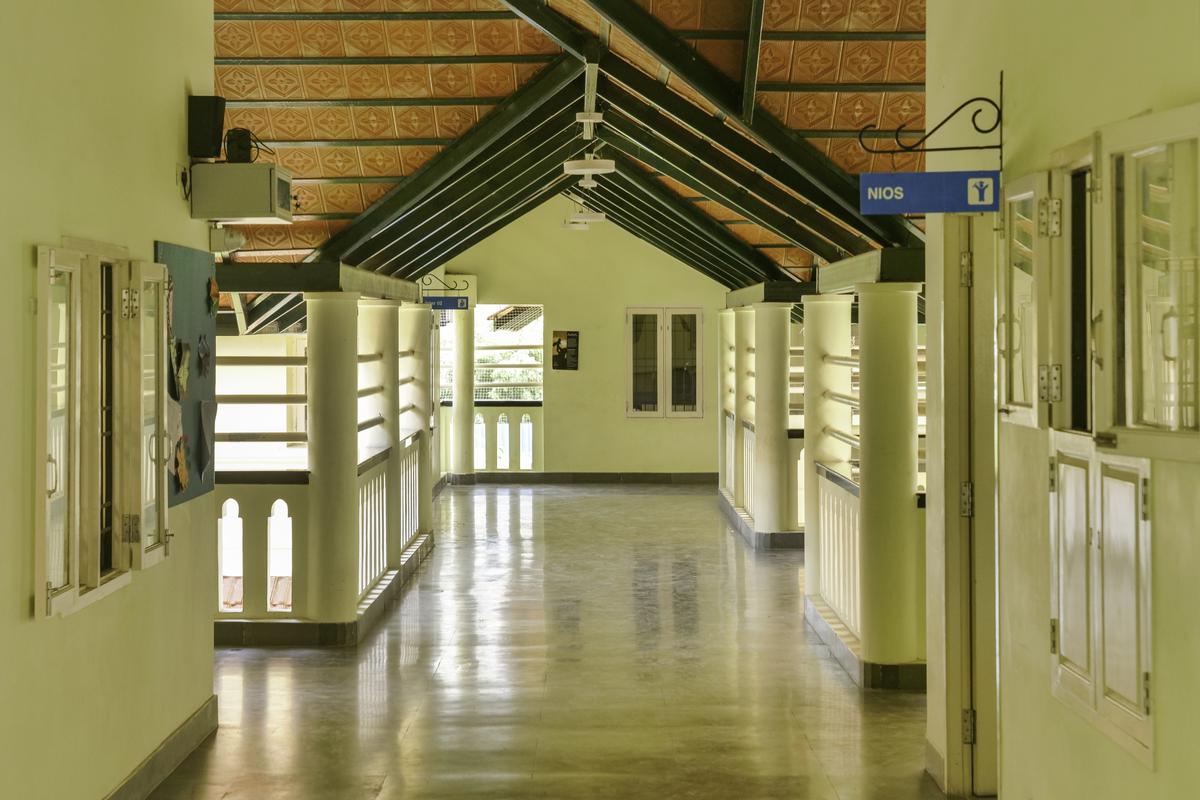
Soft edges for hassle-free movement.
Keeping the spaces flexible with movable furnishings is important as each child with autism has different sensory needs and the same space will be needed for different activities, she adds. “But at the same time, we also need to provide a structure to their days here,” she says, explaining that children with autism do better when there is a routine to follow. Visual schedules of activities for the day, personal to each student, are hung in the classrooms.
In cases of sensory meltdowns, the children are brought into the Occupation Therapy room, which acts as a sensory gym filled with swings, trampolines, hanging bars, punching bags and ball pits. “During such meltdowns, the child might be highly stimulated by one sense, and the other senses may be dull. So, we use these toys accordingly to balance it out,” says Nithya N., an occupational therapist at Sankalp.
Keeping it open
As an architect, Kuriakose is known for creating spaces rooted in the South Indian vernacular. From his association with the Muziris Heritage Project in Kerala, to contributing to the Dakshinachitra heritage and crafts village in Chennai, the common thread in his work is not just his aesthetics but his belief in creating a space that is sustainable and simple in its functionality.
Benny’s top 5 features
Quiet niches along walls for students who are unable to function in a group
Sensory gyms in case of over or understimulation
Antes in front of toilets for changing clothes
Rounded wall corners, furniture with rounded edges and tyre parks as playgrounds for safety
No overhead lights. Natural lighting in each room, cross ventilation and open spaces to bring down anxiety
With the Sankalp school too, Kuriakose incorporated features such as solar panelling for power consumption, rainwater harvesting and gardening with recycled water, to keep the school sustainable. He began by researching architecture for children with special needs. “We first wanted to understand what feels natural to them,” says Kuriakose. A few points would come up again and again: the sensory stimulation, turning down overhead lights, keeping clutter to a minimum, using visual aids and so on.
“The problem was that there was hardly any literature available when we started designing. Fifty or so years ago, children with autism would not go to school, not even in the West. So, our approach was to ask a lot of questions to the caretakers,” he says. A majority of the ideas for the school thus came from the teachers’ experiences instead.
The design of the washrooms (one on each floor is disability-friendly) benefitted from such detailed discussions with teachers. “I was told that some children have the habit of undressing before entering the toilet. So, we have designed an ante space (a buffer zone) in front of each toilet, where they can change their clothes in privacy. The ante space is a dry area and then there is the wet area,” he explains.
Kuriakose had initially kept the school’s design flat and simple because the articles he had read suggested that too many patterns could confuse the children. “But the Sankalp team assured us that we can introduce colours,” he says, although he did avoid bright, primary shades.
In fact, the different zones in the school (administrative, academic, vocational skills and the kitchen) are subtly colour-coded for easier movement of students. Muted greens, for instance, dominate the learning zones, as they promote restfulness and calmness, improving efficiency and focus.
Vocational map
Sankalp has five vocational rooms in the Kolappancheri school including a leaf plate making workshop, weaving and sewing workshops, a kitchen, and a bakery that supplies its breads, cookies and muffins to a shop at the Madras Medical Mission hospital in Mogappair.
“Some children may not have a great sense of navigation. So, we gave each block a different colour scheme, so you know if you are moving from the learning zone to the administrative zone,” he says. Sulata adds that this helps keep the younger children away from vocational spaces for the elder students, such as the bakery, the plate-making workshop, the sewing shop and so on, which contain heavy machinery.
“Our aim was never to dictate or control how the children should move, or how they should behave,” says Kuriakose. “This is why there are no strict boundaries in the school, separating the zones.”
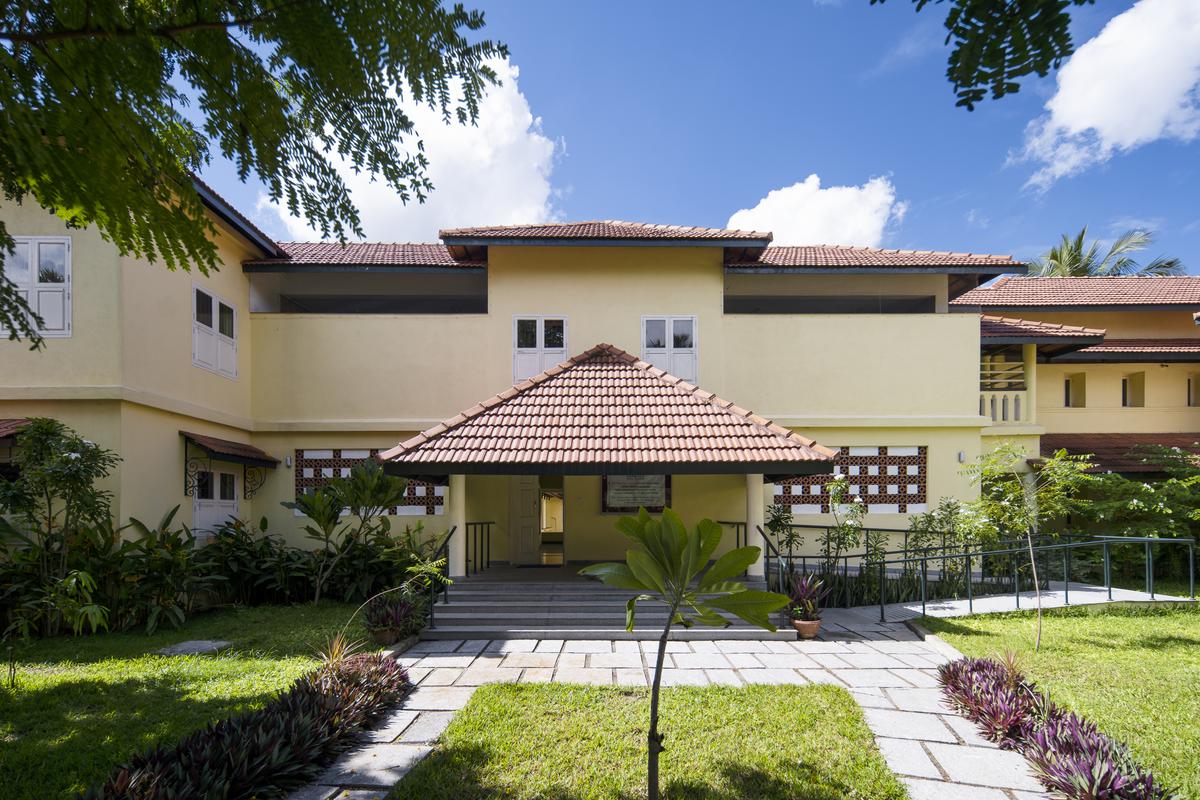
Openness is a value Sulata constantly stressed upon while explaining her requirements for the school. “We often use the thinnai as a place for the kids to lie down, relax, and have their meals,” she says. “Such open spaces have made our children much calmer.” Sulata believes these are lessons mainstream schools too could adopt. “Maybe then we will see more inclusive schools.”
[ad_2]





